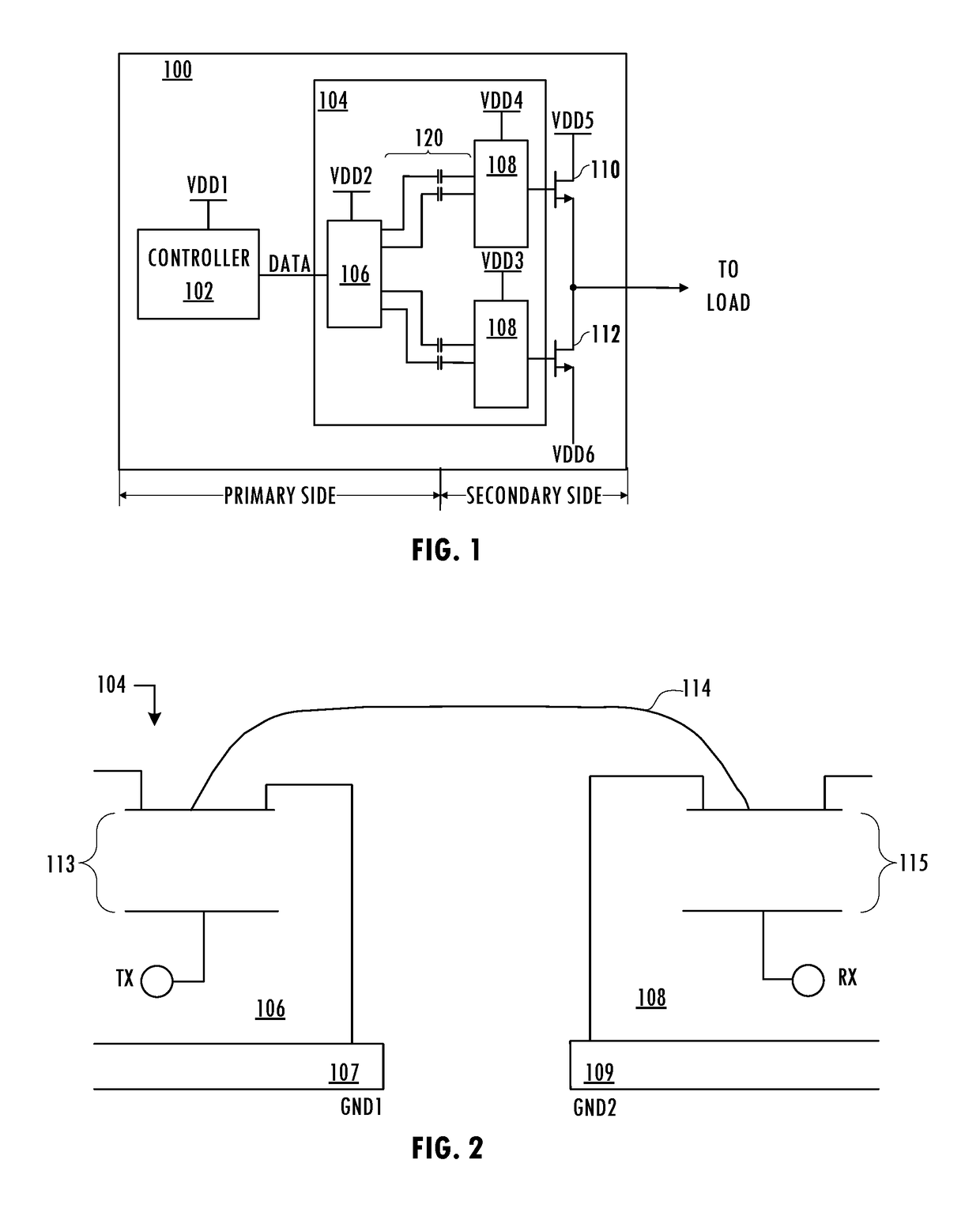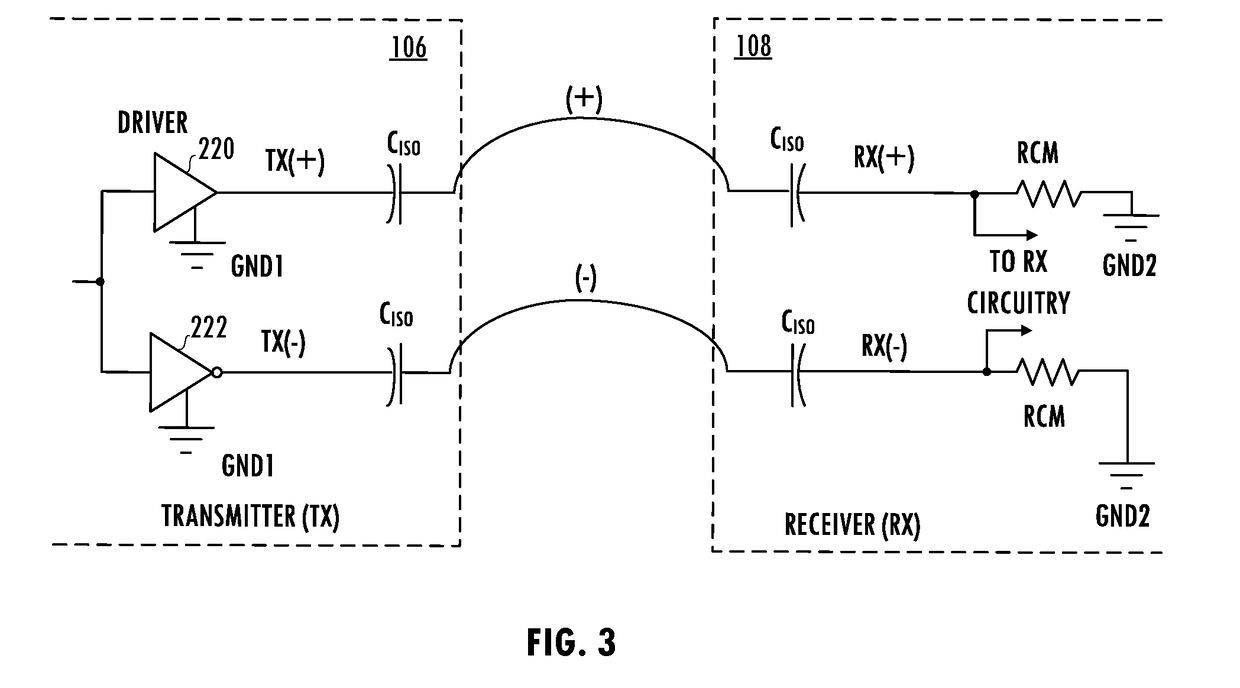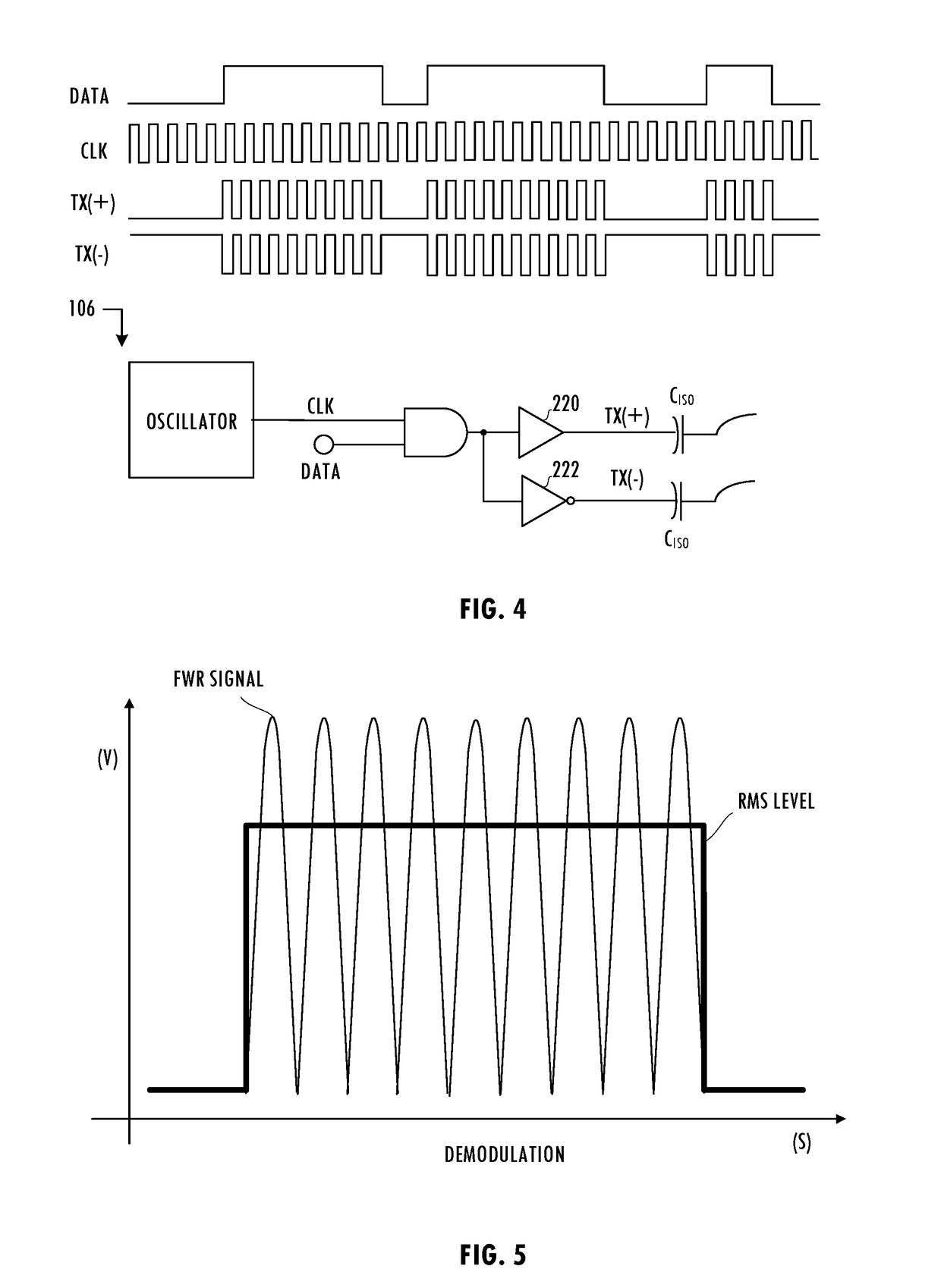Receiver architecture for digital isolators employing notch filters for common mode transient immunity
a technology of transient immunity and receiver architecture, applied in the field of isolation technology, can solve problems such as interference with information accuracy and the need for isolation barriers
- Summary
- Abstract
- Description
- Claims
- Application Information
AI Technical Summary
Benefits of technology
Problems solved by technology
Method used
Image
Examples
Embodiment Construction
[0004]In at least one embodiment of the invention, a differential receiver circuit includes a band-stop filter having a stopband fSB around a notch frequency fn of a received signal. The differential receiver circuit includes a first high-pass filter coupled in series with the band-stop filter. The notch frequency fn is less than a carrier frequency fc of a signal received by the differential receiver circuit. The band-stop filter may include a buffer circuit and a notch filter coupled in series with the buffer circuit. The notch filter may have a second stopband around the notch frequency fn. The differential receiver circuit may have a propagation delay that is independent of a pulse width of common mode transient energy attenuated by the differential receiver circuit.
[0005]In at least one embodiment of the invention, a method of receiving a signal includes band-stop filtering a first version of a received signal to attenuate energy in a stopband fSB around a notch frequency fn. T...
PUM
 Login to View More
Login to View More Abstract
Description
Claims
Application Information
 Login to View More
Login to View More - R&D
- Intellectual Property
- Life Sciences
- Materials
- Tech Scout
- Unparalleled Data Quality
- Higher Quality Content
- 60% Fewer Hallucinations
Browse by: Latest US Patents, China's latest patents, Technical Efficacy Thesaurus, Application Domain, Technology Topic, Popular Technical Reports.
© 2025 PatSnap. All rights reserved.Legal|Privacy policy|Modern Slavery Act Transparency Statement|Sitemap|About US| Contact US: help@patsnap.com



